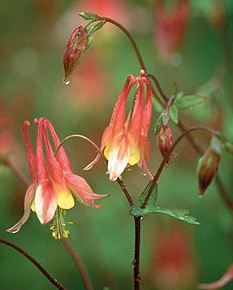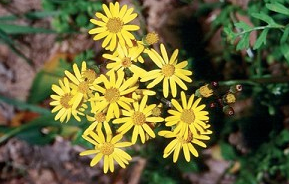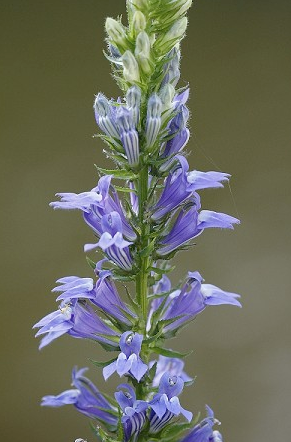Q&A with Missouri Wildflowers Nursery

 Since 1984, Missouri Wildflowers Nursery has been growing and selling native plants and seeds. Mervin Wallace, native plant expert and Missouri Wildflowers Nursery owner, and his team provide the highest quality native plants to Missouri and the surrounding states. A longtime supporter of The Conservation Federation of Missouri and many other conservation groups within the state, Mervin and wife, Ginny Wallace, are some of the most dedicated conservationists in the state.
Since 1984, Missouri Wildflowers Nursery has been growing and selling native plants and seeds. Mervin Wallace, native plant expert and Missouri Wildflowers Nursery owner, and his team provide the highest quality native plants to Missouri and the surrounding states. A longtime supporter of The Conservation Federation of Missouri and many other conservation groups within the state, Mervin and wife, Ginny Wallace, are some of the most dedicated conservationists in the state.
Missouri Wildflowers Nursery is a business alliance member and conservation supporter. Why is conservation important to Missouri Wildflowers Nursery?
I firmly believe that we are all responsible for conserving Missouri’s native plants and wildlife; it’s not just something for other people to do for us. While Missouri has many wild places, those are not enough to support and conserve those species. The nursery gives Missourians the tools and opportunities for everyone to be able to bring a little nature to their own landscapes.
You have been in business since 1984. Why did you decide to start Missouri Wildflowers Nursery and what has caused Missouri Wildflowers Nursery to evolve to this point?
I started the nursery because of my concerns about human impacts on wildlife and native plants. There were several nurseries in surrounding states starting to offer natives, but the plants were not genetically native to Missouri – they were species that grow here, but the stock originated from other states. I wanted to make sure that plants used in Missouri came from Missouri. I came along at a time when others were also making that discovery and the nursery and enthusiasm for native landscapes have grown together.
Three primary factors have contributed to our growth since 1984:
- Quality products – we have consistently provided high quality products – plants and seeds – that are genetically native to Missouri and within no more than one generation of wild-harvested, maintaining as much wild genetic diversity as possible.
- Innovation – we continually adapt our production methods to meet the demand for plants as well as meeting customers’ needs.
- Dedicated staff – our staff have a passion for native plants and share their knowledge and passion with our customers. They work hard, and recognize what they do as ultimately benefiting the environment.
Finally, the support of my family has been critical, especially in the early years when Ginny provided a steady income through her work.
 Why are natives important for Missourians to plant?
Why are natives important for Missourians to plant?
Missouri’s plants and wildlife evolved together and native wildlife depend on native plants for survival. Over the years, people have tried to “improve” on natives, often with disastrous results (think shrub honeysuckle).
What can the average citizen do to increase native plantings? (In their yard, community gardens, local businesses)
Just start adding native plants to their yards, businesses, and communities. It is easy to do with plants or seeds, and there is a wealth of information available now. Our MWN catalog is a great source of information as is the Missouri Prairie Foundation’s Grow Native! Website, grownative.org.
In addition, people can advocate for the use of natives in public areas. Many large communities are already doing this to support and attract pollinators, Monarch’s and other butterflies, songbirds and hummingbirds.
What are your most popular plantings?
With the increasing awareness of the plight of Monarch butterflies, our most popular plantings are gardens for Monarchs and we offer a selection of plants to make that easy for the homeowner. Over time we have found that many of our customers are as interested in benefitting wildlife as they are in beautifying their landscape.
 What are the easiest plantings for people to establish?
What are the easiest plantings for people to establish?
For small areas, starting with potted plants is the easiest and provides the most immediate gratification. Mulching is important to keep the weeds in check. The easiest and most successful seed plantings are those using glade species on very shallow soil or even over solid rock.
When establishing natives from plants or seeds, it is important to use species that will be adapted to the conditions of the site. The Missouri Wildflowers Nursery catalog has a wealth of information that will aid in making selections.
What are the ecological benefits and advantages for people planting natives as opposed to non-native plants?
As I mentioned earlier, our native plants and wildlife evolved together, and this is evident in several ways. A wide variety of native beneficial insects require native plants to survive and some are very specific. For example, the caterpillar of the spicebush swallowtail butterfly survives only on sassafras and spicebush. If we lose those plants, we also lose those butterflies. At the same time, most native insects do not use cultivated landscape plants. And adding to that, the vast majority of birds – even seed eaters – require a diet of insects when they are in the nest. In fact, research has shown it can take up to 300 caterpillars to fledge one chickadee. So a landscape without natives will not support nesting birds.
 Missouri Wildflowers Nursery sells both started plants and seeds. What are the advantages and disadvantages to each?
Missouri Wildflowers Nursery sells both started plants and seeds. What are the advantages and disadvantages to each?
Large areas are generally started with seeds due to the cost of installing with plants. When using seeds, weeds are usually a problem because mulch can’t be used to suppress them. It often takes three years or more for the weeds to diminish and the planting to look like it is really going to work. The cost per area is much less when starting with seeds.
Smaller, bed-sized areas around homes and in formal locations should be started with plants. Mulch can be used as needed to keep most of the weeds out. The cost of plants is greater. A bed started with plants will be looking great either the first season or the second, depending on the time of instillation.
What is the biggest hurdle or obstacle people face when trying to establish a new planting?
With a seeding, annual weeds can be a serious headache, depending on prior use of the area. Later, some perennial weeds, like tall goldenrod (a native) and sericea lespedeza (exotic) can be haunting. Starting with a long term nurse crop like lanceleaf coreopsis, or foxglove beardtongue can significantly deter the annual weeds at the beginning. Vigilant spraying of sericea can keep it under control. I’m beginning to think the only way around canada goldenrod is to keep the goldenrod plants that surround the planting from making seed during the two or three year establishment phase.
 What other products or services should people be aware of?
What other products or services should people be aware of?
Plants and seeds are our primary focus. However, we do also sell organic fertilizer, potting soil, reference books, t-shirts, bee blocks (nesting blocks for native solitary bees), and even a few handwoven items created by my wife.
Anything new for 2017 that we should be aware of?
While there is nothing like a visit to the nursery at Brazito, check out the new list of locations where we will sell plants this spring. If you can’t make it to the nursery, you can send us your order and we’ll bring your plants to the event.
Order here: http://mowildflowers.net/PDF-Catalog_ep_54.html
